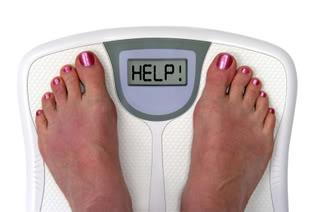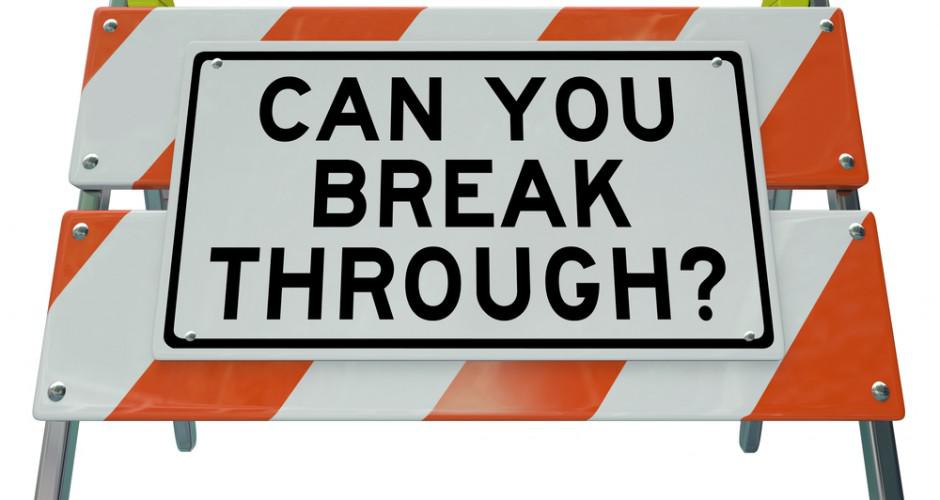Image via Mark’s Daily Apple
Ever hit a brick wall during your fitness journey? Figuratively speaking? If you hit one literally, you should umm, be more careful. Or get your eyes checked. I’m talking about weight loss plateaus. Ladies and gentlemen, there is nothing more discouraging. Nothing more disheartening and deflating than stepping on the scale after a week of proper, clean eating and grueling workouts and seeing THE SAME NUMBER AS THE WEEK BEFORE. SAME NUMBER. I can’t tell you how despondent I felt when it happened to me. I was both horrified and confused. What had happened and why the hell was this scale giving me improper figures? Must be a mistake, I thought. I’ll weigh myself again tomorrow. Perhaps by tomorrow, they’d have re-calibrated this thing. Well, the next day, I weighed the same thing. I even tried a different scale, for clarification. Same thing.
My confusion was short-lived, as I quickly searched my best friend, Google, for answers. Relief washed over me as I was bombarded with a million answers. Deep breaths. Okay, I’m normal. This isn’t unique. AND there’s a solution? Phew! Why hadn’t anyone mentioned this to me before? So just so you don’t experience the severe panic I did, I am going to tell you a little about weight loss plateaus and how to get off them. A weight loss plateau happens when weight loss stalls despite regular exercise and healthy eating habits. It is a very common occurrence (hey, it happened to me) and you should not be alarmed!
A plateau occurs because your metabolism — the process of burning calories for energy — slows as you lose muscle. Some muscle is lost during weight loss (in addition to fat) and since muscle is critical to keeping your metabolism going, losing it means a decrease in metabolism. When you begin to lose weight, the pounds come off rapidly. As you get to a smaller weight, you burn fewer calories than you did when you weighed more, even with doing the same activities. [Case in point: On any cardio machine, inputting 160 lbs as one’s weight yields a smaller number of calories burned than say, 190 lbs,with the same effort.] In addition, your calorie requirements decrease, because your body requires less energy to move around. For example, you require more calories (to maintain or lose weight) at 180 lbs than you do at 145 lbs.
Image via Gym Junkies
Plateaus can last from days to months. But never fear! Deep breaths! Rexie is here! Below are a few tips:
- Watch your sodium intake: Excess sodium in your diet will cause your body to retain water. The average adult human body is approximately 60% water, so it makes sense that retaining even more water will reflect on the scale…right?
- Track your food: A lot of times, calories “sneak” into our diets. Yes! The calorie creep! The random 150 calorie bar here. The extra serving of rice there. The two glasses of your favorite margarita during happy hour. By all means, treat yourself (what is life?!?) but realize that you have a goal to accomplish. Don’t let those chocolate chip cookies get in the way every time.
- Vary your calories/food choices: Bad news is, your body is smart. And if you don’t know, it WILL be the boss of you, should you let it. Good news is, it is easily confused. The body tries to maintain balance/equilibrium -if you give it say, 1,700 calories a day, it realizes quickly and, using its super magic powers (to keep it simple, haha), keeps you at that weight, whether or not you’re doing the right things. During my plateau, I fed my body different types of meals (it’s so easy to stick to eating the same foods over and over again). I would also do confuse my body by eating 200-350 calories more on one day, and reducing my calories by the same amount the day after. Keep your body guessing! Don’t let it know what you’re doing!
- Change/Increase/rev up/intensify exercise: You can’t expect different results doing the same thing over and over again! That’s insanity! To continue seeing results, you have to rev up your exercise. You can do this by increasing the number of repetitions per exercise, increasing the number of sets per exercise, increasing your weight (for example, squatting with a 60 lb dumbbell instead of a 40lb), intensifying your cardio routines (for example, during circuits, try increasing your ‘ON’ time. ‘On’ time refers to the period in which you perform the exercise), or a complete change of exercises (switching your cardio from running to spinning or stair climbing). Remember that intensifying your routine only makes you stronger. And strong, my friend, is the new skinny.
- Don’t give up: During my plateau, I very often felt defeated. I wanted nothing more than to give up completely: busting my behind week after week, with no results left me feeling deflated. i I kept going for two reasons: my stubborn/resilient nature (who would’ve thought that would come in handy?) and the goal I was yet to attain. Knowing that other people had been/were in the same situation, reading/enlightening myself about my predicament, talking to people in the know – all these things helped me continue. Good things come to those who wait…and work. So my dear friend, if you’re reading this and you’ve hit a brick wall. Don’t turn around and walk the other way…Even brick walls get demolished.
Wishing you a plateau free journey,
Rex.
Follow me on Instagram @Rexie_A for tips on maintaining a healthy lifestyle!
Disclaimer: Earlier in my journey, I was all about the numbers. Scale, scale, scale. Now, having learned more than I knew at first, I use other elements for measurements – inches, dress size/fit, overall feel (I know right? What is that??!). This is not to say I have completely chucked the scale because I haven’t. It still serves as a tracking method for me, but it’s certainly not the only one.


























